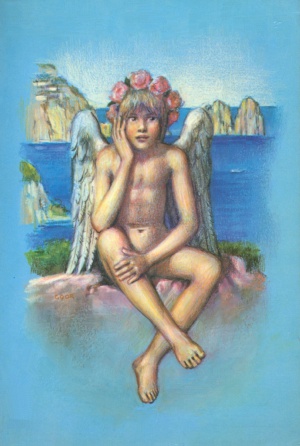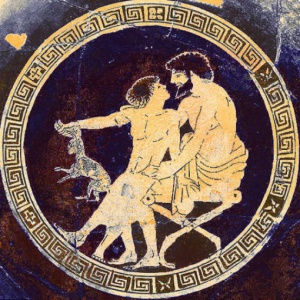(Boylove Documentary Sourcebook) - Pederastic Desire in a Poem by Meleager: Difference between revisions
From BoyWiki
| Line 24: | Line 24: | ||
==See also== | ==See also== | ||
*[[Puerilities: Erotic Epigrams of "The Greek Anthology" (book)]] | *[[Puerilities: Erotic Epigrams of "The Greek Anthology" (book)]] | ||
*[[Adult friend]] | |||
*[[Athenian pederasty]] | *[[Athenian pederasty]] | ||
*[[Boylove]] | *[[Boylove]] | ||
| Line 30: | Line 31: | ||
*[[Greek love]] | *[[Greek love]] | ||
*[[Historical boylove relationships in ancient Greece]] | *[[Historical boylove relationships in ancient Greece]] | ||
*[[Loved boy]] | |||
*[[Minor attracted person (dictionary)]] | *[[Minor attracted person (dictionary)]] | ||
*[[Pederasty in ancient Greece]] | *[[Pederasty in ancient Greece]] | ||
*[[Pedophilia]] | |||
*[[Philosophy of ancient Greek pederasty]] | *[[Philosophy of ancient Greek pederasty]] | ||
*[[Spartan pederasty]] | *[[Spartan pederasty]] | ||
*[[Theban pederasty]] | *[[Theban pederasty]] | ||
*[[Young friend]] | |||
==External links== | ==External links== | ||
Revision as of 00:40, 1 May 2020

From Homosexuality in Greece and Rome: A Sourcebook of Basic Documents, edited by Thomas K. Hubbard (Berkeley: University of California Press, 2003).
If the Loves cherish you, Philocles, and myrrh-breathed Seduction
And the Graces who gather flowers of beauty,
May you hold Diodorus in your embrace, may sweet Dorotheus
Sing across from you, and Callicrates sit on your knee.
May Dio give pleasure, stretching out your horn in his hand
(That hits the spot!), and may Uliades retract its tip.
May Philo give you a kiss, Theron chatter,
And may you diddle Eudemus’ nipple under his cloak.
Blessed man, if the god should give you all these delights,
What a mixed grill of boys you would cook!

See also
- Puerilities: Erotic Epigrams of "The Greek Anthology" (book)
- Adult friend
- Athenian pederasty
- Boylove
- Cretan pederasty
- Ephebophilia
- Greek love
- Historical boylove relationships in ancient Greece
- Loved boy
- Minor attracted person (dictionary)
- Pederasty in ancient Greece
- Pedophilia
- Philosophy of ancient Greek pederasty
- Spartan pederasty
- Theban pederasty
- Young friend